Below are some useful training tips for your dog. If you have any questions about training, please get in touch through our contact page and we’ll be happy to help!
First day home!
This is an exciting day, but it can be pretty overwhelming for a new dog. There is so much to adjust to that it’s important to keep things quiet and low-key at first by not having friends (or their dogs) over for an enthusiastic welcome. First, take the dog outside and stay there until she poops or pees in the area you prefer. If you already have a dog, this introduction should also take place outdoors.
The next thing is to introduce your dog to the house while on leash. This is the time to give a simple command like “ah ah” or “no” in a quiet voice if there is too much interest in things like shoes, beds, or garbage cans. Later, some quiet time would be nice, along with lots of petting and a first walk around the block. Tomorrow the fun begins!
Make sure that no one opens an outside door without someone holding your leashed dog to prevent “door dashing” . The first few days, even weeks are the most common time for a dog to slip out and run away.
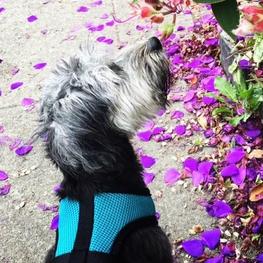
Teaching your dog "wait"
This is one of the most useful and often used commands in your dog tool box. It is used when your dog is ready to leave the house with you, when a visitor is arriving and on a walk when you need a full stop to avoid another dog, child or car.
Start with whatever door you use most often. With your dog on a leash, stop him a little behind you as you walk up to the door. Have your arm extended back with the leash upright to let him know he cannot come forward anymore, and say say the command “‘wait”. Say it just once. If by some crazy chance he stops at that moment pop a treat that you have in you hand into this mouth.
Repeat a few times until he stops and looks up to you waiting for the treat. Now you can open the door- not quickly but without hesitation. If he is still not moving forward, praise and say “lets go” or whatever your phrase is and walk out with him behind or at your side. Now you can practice extending the time of the “wait”, Ideally, you will be able to step outside the threshold for a moment without him coming with your until you say “lets go”. Once you have this mastered it can be used at street corners, any other door or opening, to give space to other people or dogs on the sidewalk or when a visitor comes to the door.
Note: “wait” is not the same as “stay”. The latter is for when you have your dog in a sit or down and you mean for him to stay there until you say “OK” or “Come”, whatever you use.
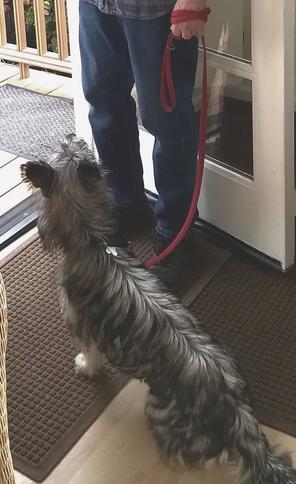
On-leash reactivity
There are types and degrees of this problem. But, if your dog lunges, barks, or growls when they see or get near another dog while on leash, they’ve got some issues to deal with. It is best to have a dog savvy person do this with you at the beginning if possible, particularly if the problem pops up with almost every dog you pass. They will also be able to determine if your dog is just anxious, or wants to play, or is aggressive. (The following method is not suitable for aggressive dogs.)
First- turn off your phone and no chatting as you will need to be more observant than your dog. Start in an area you don’t normally walk in as that could be a trigger for bad behavior. Have some exceptional treats with you but don’t use them yet. Keep your dog close to you, not out in front as fearful dogs become even more nervous away from you and try to keep a loose leash if possible.
When you first see a dog coming, move out of the way a good distance, stop, and ask for a “sit” if that is possible. Hold your treat close to the dogs’ nose and move it around to attract their attention. Speak in a slow, quiet, voice. You will have to eventually give your dog the treat or they will decide you aren’t going to produce, and that the approaching dog is more interesting. The idea is to keep attention away from the “threatening” dog until it is safely past and if your dog behaved well, give them some “happy talk” and another treat. Keep repeating this exercise until your dog starts to stay relaxed at the sight of another dog. Some dogs “get it” in 30 minutes, but others can take many sessions. Eventually, you will be able to keep walking and only use a quiet reassuring voice until you are in the clear and then produce a great treat and praise.
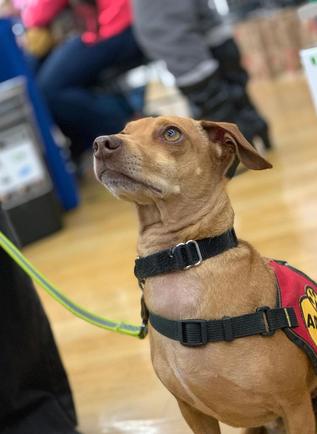
Training with treats - the hows and whens
Even something as simple as a dog treat can get pretty complicated. How many? How often? What kind? When to give one and when not to?
Just keep it simple. Give a dog a treat immediately (within 1-2 seconds) after he or she does something you would like them to do. Therefore, you must have the treat handy and be watching for the behavior you want your dog to repeat. Take “sit” for example. Hold the treat close and just above your dog’s nose. Move it slowly upward and toward him and if he follows your hand and sits…give him the treat and say only one word, quietly – “Sit”. Do not say “Can you sit?” Just keep it simple. The treat should be presented right in front of your dog’s mouth, using your fingertips or in your palm if he is not gentle. Repeat the process until it becomes one motion. After some practice, you will no longer even need the treat. Just a hand motion and the word “sit” will be all you need. This example applies to almost all the commands you will be using at the beginning stages of training.
Treats can vary from kibbles to the most delicious things (for dogs) you can find. Keep in mind that feeding your dog table scraps can reduce your training treats’ effectiveness. The best and tastiest treats should be reserved for tough or important skills, like calling your dog back to you.
Some trainers go straight to yanking on a choke chain while others believe in a literal constant shower of treats, even when a dog is just sitting. But neither extreme is necessary. Overuse of treats is a common mistake and too much of any food can become common and maybe fattening. Just like with humans, finding the balance of moderation is important as certainly more than one treat at a time may be in order when you get a great response to your request! But remember to combine treats along with praise and touch – these are often overlooked rewards that are also very effective.
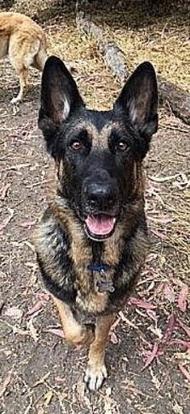
Dog gear tips
LEASHES
COLLARS
HARNESSES
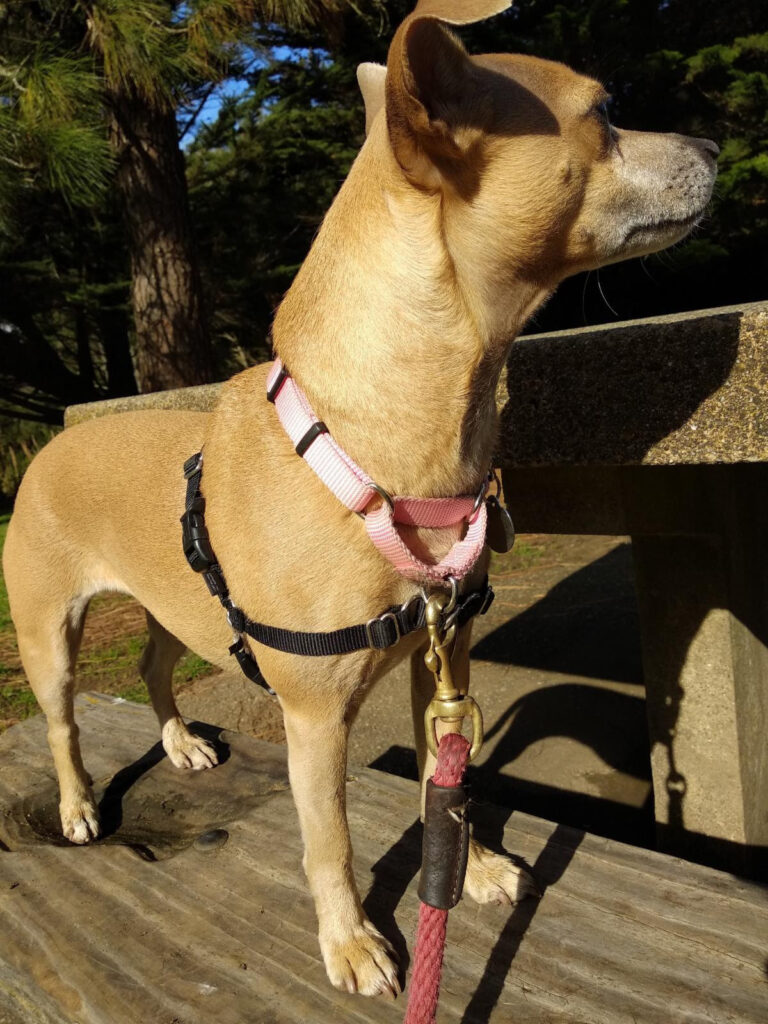
Barking
Separation anxiety
Recall
Teaching your dog this simple yet important command is often a frustrating task. With practice and patience, however, it doesn’t need to be. As with any other command, it requires repetition, albeit in stages. Unlike “sit” or “stay,” location and distance enter into the equation.
It is easiest to start in your home, as the surroundings are familiar to your dog. Of course, start with a pocket of great treats, and ensure that your dog is calm and at least 5 feet away. In a calm, serious voice, say the dog’s name, wait for a look, then quickly say the word “come.” A little lean forward and a hand outstretched with the treat should arouse enough curiosity for an approach. Pop that treat in his mouth while saying the single word or phrase that you’ve chosen to use when he does something right, like “good boy” or “yes.” Always show him how happy he just made you.
Once that 5-foot recall is reliable, move to 10 feet and then just out of sight for a second before the “come.” This work and the following should be done in intervals of 5 or 10 minutes with longer breaks, and each step should be worked on until you get a rock-solid response. If you have a yard or other outdoor space, you can move there and practice using a 10- or 20-foot rope as a leash. You won’t lose your dog, but if he is a little reluctant to come back to you, gently pull his head around to see you and the treat.
Let’s be honest: the range of response and reliability you get will vary. You may be successful with each of these steps, but when there is a ball to play with or a great game of chase, the new dog may ignore you. In this case, slowly walk closer to your dog until you are a few feet away and try again, or toss a treat in front of him, get close, take him by the collar (no treat) and walk away together. Make sure to never yell, chase, or lose your patience. Once you achieve some success, don’t just use “come” to take him away from his dog friends, or take him home or give him a bath. If you practice using your recall when your dog is calm and at various distances and in different circumstances, it will soon become a natural communication between the two of you.

